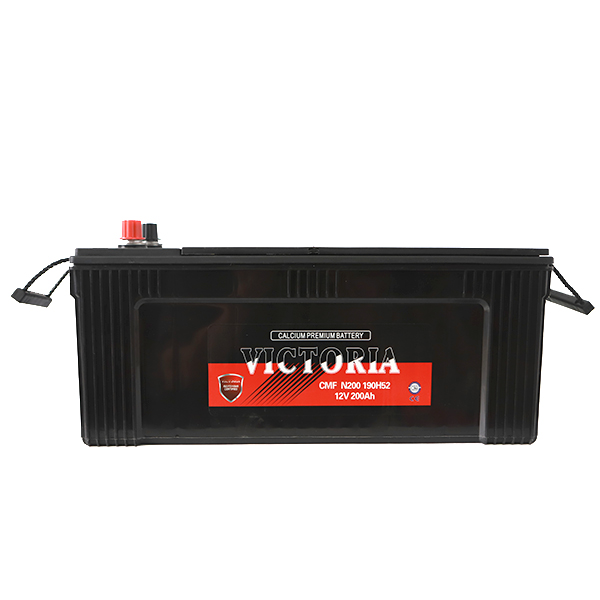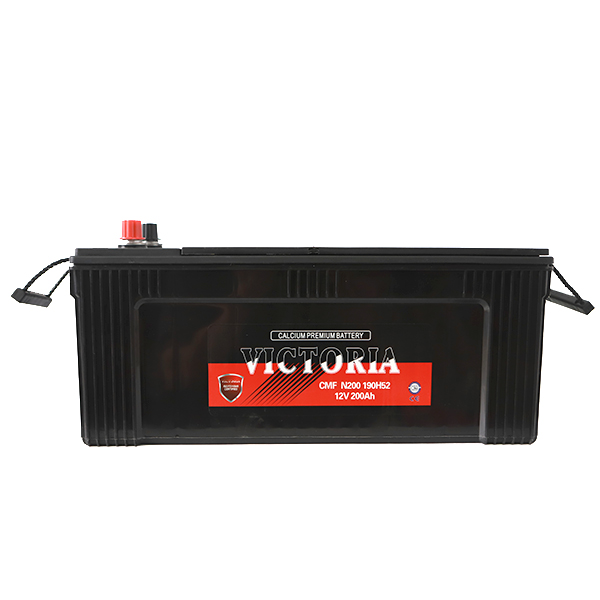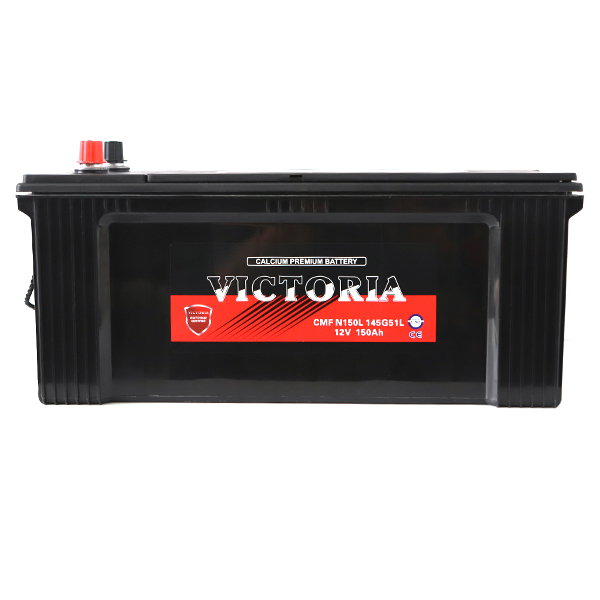battery knowledge
当前位置:首页 - battery knowledge
battery knowledge
-
 Extending the Journey: Breakthroughs in Lead-Acid Battery Cycle Life
Extending the Journey: Breakthroughs in Lead-Acid Battery Cycle Life
2025-06-30The perception of lead-acid batteries as inherently short-lived in cyclic applications is outdated. Breakthroughs spanning materials science (advanced alloys, lead-carbon), design (VRLA/AGM), manufacturing (TPPL, optimized paste), and management (smart charging/BMS) have collectively propelled cycle life to impressive new levels. While lithium-ion dominates high-energy-density applications, modern lead-acid, particularly VRLA and lead-carbon variants, delivers exceptional cycle life combined with unmatched cost-effectiveness, safety, and recyclability in its core markets. The relentless focus on overcoming sulfation and corrosion has ensured this 160-year-old technology remains a vital and enduring solution for energy storage challenges demanding proven reliability and thousands of deep cycles. The journey of extending its life continues.
-
 Squeezing More Power: The Quest for Energy Density in Lead-Acid Batteries
Squeezing More Power: The Quest for Energy Density in Lead-Acid Batteries
2025-06-27For over 160 years, the lead-acid battery has been a workhorse of energy storage, prized for its reliability, low cost, and recyclability. However, its Achilles' heel has always been energy density – the amount of energy stored per unit weight (Wh/kg) or volume (Wh/L). Compared to modern lithium-ion batteries, traditional flooded lead-acid (FLA) designs offer significantly lower energy density, limiting their use in applications demanding lightweight, compact power. Yet, significant and often underappreciated breakthroughs have steadily pushed the boundaries of what this venerable technology can achieve.
-
 The Evolution of Lead - Acid and Lithium Batteries
The Evolution of Lead - Acid and Lithium Batteries
2025-06-26In conclusion, the evolution of lead - acid and lithium - ion batteries has been a remarkable journey, shaped by scientific innovation, technological advancements, and changing market demands. These two battery types have played and will continue to play crucial roles in powering our modern world, each finding its niche in different applications based on their unique characteristics.
-
 The Birth of the Lead-Acid Battery: Powering the Spark of a New Era
The Birth of the Lead-Acid Battery: Powering the Spark of a New Era
2025-06-25The invention of the lead-acid battery in 1859 by French physicist Gaston Planté wasn't a sudden spark in a vacuum. It emerged from a potent mix of burgeoning scientific curiosity, the limitations of existing technology, and a growing societal hunger for portable and reliable electrical power. Its birth was fundamentally rooted in the need to overcome a critical drawback of the early batteries that preceded it.
-
 Characteristics of Maintenance-Free Lead-Acid Batteries
Characteristics of Maintenance-Free Lead-Acid Batteries
2025-06-24In conclusion, maintenance-free lead-acid batteries stand out for their sealed construction, unique internal structures, excellent performance, environmental benefits, and reduced maintenance needs. These characteristics make them indispensable in a wide array of applications, from consumer electronics to large-scale industrial and energy storage systems. As technology continues to progress, further improvements in the design and capabilities of maintenance-free batteries are expected, further solidifying their position in the battery market.
-
 Classification of Lead-Acid Batteries
Classification of Lead-Acid Batteries
2025-06-23Lead-acid batteries, with a history spanning over 160 years, are among the oldest and most widely used rechargeable battery technologies. Renowned for their cost-effectiveness, high reliability, and ability to deliver high surge currents, these batteries find applications in a diverse range of sectors, from automotive to renewable energy storage. Understanding their classification is crucial as it helps in choosing the right battery for specific requirements. The classification of lead-acid batteries can be comprehensively analyzed from multiple perspectives, including structural design, performance characteristics, and application scenarios.
-
 Lead-Acid Batteries vs. Lithium Batteries: A Comprehensive Comparison
Lead-Acid Batteries vs. Lithium Batteries: A Comprehensive Comparison
2025-06-20In conclusion, lithium batteries are ideal for applications that prioritize high energy density, long lifespan, and fast charging, such as consumer electronics and electric vehicles. Lead-acid batteries, on the other hand, remain a viable option for less demanding applications due to their lower cost and reliability, like backup power systems for small-scale operations.
-
 Applications of Lead-Acid Batteries in Diverse Fields
Applications of Lead-Acid Batteries in Diverse Fields
2025-06-19In conclusion, lead-acid batteries have a diverse range of applications across multiple industries. Their reliability, cost-effectiveness, and ability to meet the specific power requirements of different applications have made them an integral part of modern life. Despite the emergence of new battery technologies, lead-acid batteries continue to play a vital role in powering various systems and devices, and their importance is likely to persist in the foreseeable future.
-
 Characteristics of Lead-Acid Batteries
Characteristics of Lead-Acid Batteries
2025-06-18Lead-acid batteries, the oldest rechargeable battery technology in widespread use, have played a pivotal role in various industries since their invention in 1859. Despite the emergence of newer battery chemistries, such as lithium-ion and nickel-metal hydride, lead-acid batteries remain indispensable due to their unique characteristics. This article delves into the key features of lead-acid batteries, exploring their structure, operation, performance attributes, advantages, disadvantages, and application
-
 The Evolution of Sodium-Ion Batteries: From Obscurity to Energy Contender
The Evolution of Sodium-Ion Batteries: From Obscurity to Energy Contender
2025-06-17For decades, lithium-ion batteries (LIBs) reigned supreme, powering our portable electronics and increasingly, our electric vehicles and grids. Yet, lurking in the shadows of research labs and periodic tables, sodium-ion battery (SIB) technology has undergone a remarkable evolution – transforming from a scientific curiosity into a promising and rapidly advancing alternative poised to reshape the energy storage landscape.
-
 From Lab Curiosity to Global Revolution: The Evolution of Lithium-Ion Batteries
From Lab Curiosity to Global Revolution: The Evolution of Lithium-Ion Batteries
2025-06-16The lithium-ion battery (LiB) stands as a defining technology of the 21st century, powering everything from smartphones to electric vehicles (EVs). Its evolution—spanning five decades of breakthroughs, near-disasters, and relentless innovation—reveals a triumph of materials science over electrochemical limitations.
-
 The Resilient Pioneer: The Evolution of Lead-Acid Batteries
The Resilient Pioneer: The Evolution of Lead-Acid Batteries
2025-06-13Lead-acid batteries embody a paradox: a 19th-century invention outliving countless "disruptive" technologies. Its success lies in continuous reinvention—from Planté’s primitive jar to today’s carbon-enhanced AGM. While lithium-ion dominates high-energy apps, lead-acid thrives where cost, safety, and recyclability matter. As emerging markets adopt renewables and micro-hybrids surge, this veteran’s story is far from over. In an era obsessed with "new," the humble lead-acid battery teaches a timeless lesson: Evolution beats extinction.






